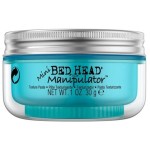What Is The Best Fabric For Bed Comforters?
Choosing the right fabric for your bed comforter is a crucial step in creating a comfortable and cozy sleeping environment. The fabric you select will directly impact the feel, warmth, breathability, and durability of your comforter. With a wide array of materials available, understanding the characteristics and benefits of each option is essential in making an informed decision. This article will delve into the most popular fabrics used for bed comforters, providing insights into their unique properties and suitability for different preferences and climates.
Cotton
Cotton is a natural fiber renowned for its softness, breathability, and affordability. It is a highly versatile fabric that can be woven into various densities and textures, ranging from lightweight and airy to plush and thick. Cotton comforters are known for their ability to regulate temperature, absorbing moisture and releasing it into the air, making them suitable for all seasons.
However, cotton can wrinkle easily and may require frequent washing. Additionally, cotton comforters can be prone to shrinking or losing their shape after repeated washes, especially if they are not properly cared for. Despite these drawbacks, cotton remains a popular choice for comforters due to its natural properties and wide range of textures and styles.
Polyester
Polyester is a synthetic fiber that offers exceptional durability, wrinkle resistance, and moisture wicking properties. It is a relatively inexpensive option and is often blended with other fibers to enhance their performance. Polyester comforters are known for their resilience, maintaining their shape and plushness even after numerous washes.
While polyester is a popular choice for its practicality, it may not be as breathable as natural fibers like cotton. This can be a concern for individuals who tend to sleep hot, as polyester comforters can trap heat and moisture. Additionally, polyester is not as soft as cotton, although advancements in manufacturing have led to softer and more luxurious polyester fabrics.
Down
Down is a natural insulator derived from the underfeathers of ducks and geese. Down comforters are renowned for their exceptional loft, warmth, and luxurious feel. They are exceptionally light and compressible, conforming to the body's shape for optimal comfort and support.
The natural loft of down provides excellent insulation, trapping warm air and creating a cozy and comfortable sleeping environment. Down comforters are also highly breathable, allowing air to circulate freely and preventing overheating. However, down is a more expensive option than other fabrics and requires specialized care, including regular fluffing and professional cleaning.
Wool
Wool is a natural fiber known for its warmth, durability, and moisture-wicking properties. Wool comforters are excellent for cold climates, providing superior insulation and keeping you warm even in frigid temperatures. Wool is naturally breathable and can absorb moisture without feeling damp, making it an ideal choice for those who tend to perspire during sleep.
However, wool can be itchy for some individuals, and it may be more prone to wrinkling than other fabrics. Wool comforters also require specialized care, including dry cleaning or gentle hand washing, to maintain their shape and softness.
Silk
Silk is a luxurious and natural fiber prized for its softness, breathability, and temperature-regulating properties. Silk comforters are exceptionally soft and smooth against the skin, providing a luxurious and indulgent sleeping experience. Silk is a natural insulator that helps regulate body temperature, keeping you cool in the summer and warm in the winter.
However, silk is a delicate fabric and requires careful handling and cleaning. It is also a more expensive option compared to other fabrics. While silk is a luxurious and comfortable choice for comforters, its delicate nature and high cost may not be suitable for everyone.
Bamboo
Bamboo is a natural fiber that offers numerous benefits, including softness, breathability, and moisture-wicking properties. Bamboo comforters are known for their silky feel and hypoallergenic qualities, making them an excellent option for individuals with sensitive skin. Bamboo is a naturally antibacterial and antifungal fabric, promoting a healthy and hygienic sleeping environment.
However, bamboo is often blended with other fibers, such as cotton, to enhance its durability and prevent shrinking. While pure bamboo comforters are available, they tend to be more expensive and require specialized care. Bamboo is a sustainable and eco-friendly option, making it a popular choice among environmentally conscious consumers.
Ultimately, the best fabric for your bed comforter depends on your individual preferences and needs. Consider factors such as warmth, breathability, durability, cost, and care requirements when making your selection. By carefully evaluating each fabric option, you can choose the best comforter to create a comfortable and restful sleeping experience.

Comforter Guide Designer Living

Bedding Fabrics Materials Guide Nordstrom

Bedding Fabrics Materials Guide Nordstrom

Bedding Fabric Guide Which Material Is Best For You

Comforter Guide Designer Living

Tips For Choosing Your Comforter Color The Company

The 6 Best Comforters Of 2025 Reviews By Wirecutter

How To Choose Bed Sheets A Guide The Company
The 4 Best Comforters Of 2025 Tested And Reviewed

12 Best Comforters 2025 The Strategist







